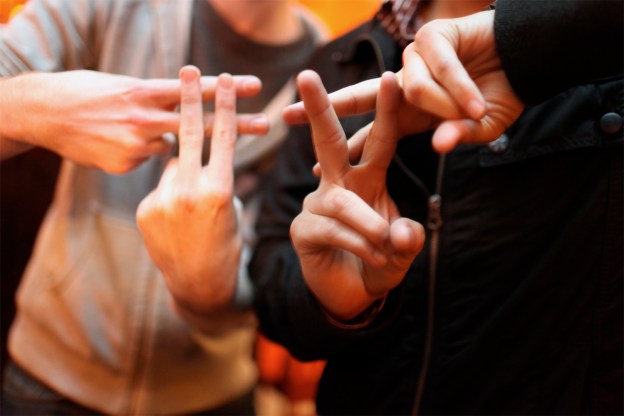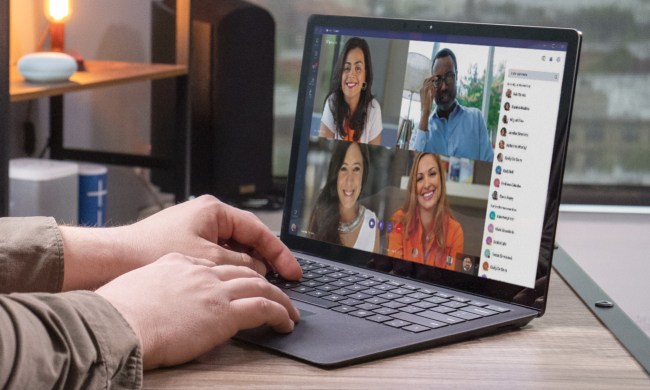
SXSW has long been the land of the cool kids. It’s feather tattoos, retro sunglasses, Tecate, and mustaches for as far as the eye can see. Twitter’s earliest audience ran in the same circles – artists, developers entrepreneurs, tinkerers, and digital tastemakers.
One is a festival and one is a social-media network, but they’ve lived surprisingly parallel lives. Both sprang from humble roots. Both grew into indie icons, cherished and nurtured by a handful of people who embraced what they represented and saw the potential in what they could grow into. Now, both are struggling to mature without alienating the crowd that made them what they are.
The hipster haven in the heart of Texas and the social-media platform it spawned are both increasingly centered on one thing: Hashtags. Not just hashtags, of course, but what that thing (we once knew it as a pound key, remember?) has come to mean – and that’s digital media branding. Big companies. Big money. Big influence.
The transition from indie darling to corporate tool is a tough one, and both are haphazardly doing the best they can to navigate the awkward stage. But is it possible to maintain a counterculture, entrepreneurial spirit as big companies start to wield more influence? And – hipster credibility aside – is the flood of money from corporate bank accounts really such a bad thing?
A long, long time ago, in a galaxy far, far away Austin
Before we look more closely at how the hashtag has warped both Twitter and SXSW, let me take you on a trip to the past. It’s 2007 and Twitter has just launched … at SXSW. The Interactive Week of the festival has around for about nine years now, but it’s still trying to find its footing, unsure of where it fits with the very established music and film culture the show hosts.
Twitter quickly becomes a hit, though, and adds legitimacy to SXSWi as a launching pad of sorts. Back then, Twitter was this very experimental place where users and third-party developers had all the access and authority they wanted. And one thing they wanted was a way to organize and link together tweets.
So they created the hashtag. The hashtag wasn’t something Twitter built. In the true DIY ethos of Twitter during those days, early users created it out of thin air to aid search. It was elegant, utilitarian, simple. Behold, the first hashtagged tweet:

But now we know we’ve created a monster. Everything – and I mean everything – is hashtaggable.
It’s hashtags’ world, we’re just living in it

It used to be you needed a website if you planned to promote something. Now, you also need a hashtag. Sometimes, movie previews don’t even include a website or even a Facebook page, just a hashtag. Many, many other platforms have adopted the mechanism for their own search and discovery efforts (Tumblr and Instagram being chief among them). The hashtag is also now how brands are able to leverage user-created content.
A number of startups are launching to pinpoint this precise market: Delivering user-made content to brands – and they’re largely doing it thanks to the hashtag. I recently asked one company doing this, Pixlee, about how it was approaching the whole “stealing photos” thing that Instagram users had become so riled over. Here’s the loophole: If a brand says “use this very specific hashtag when uploading your photos to Twitter or Instagram and we might use them in our promotions,” you are essentially signing all those images over when you use it.
There’s nothing serendipitous about how brands are organizing their online conversations; it’s all very calculated.
There’s nothing serendipitous about how brands are organizing their online conversations; it’s all very calculated. Just ask Oreo. At SXSW, the brilliant team behind the blackout Super Bowl tweets explained that while they couldn’t have foreseen the electrical outage, the social media machine they have in place is primed to spring into action and take advantage of just this type of opportunity. “[The Super Bowl tweet] didn’t come from left field,” Oreo exec Steve Doan said during a panel on microcontent marketing last week. “It was very consistent with what we were doing – very simple and easy to digest. Speed is key.”
And Oreo’s panel was just one of many, many marketing and brand-based keynote and speaker events. To say they dominated the lineup is a generous understatement.
The brand invasion isn’t all bad

SXSWi used to be about tech and social startups … starting up. Now there are a few things happening: First, a lot – and I mean, a lot – of these startups are business-to-business operations. Leveraging users’ social-networking data (on networks that were, in some cases, launched at SXSW – go figure) is a huge focus now, and for every user-facing product, there are 10 business-facing ones.
Second, there’s no shortage of hashtag-happy brands at SXSW. Taco Bell’s #FeedTheBeat campaign connected fans to bands during concerts in a variety of ways. Dorito’s 62-foot tall vending machine allowed concert-goers to tweet to activate it. You were encouraged to use the appropriate hashtags and @handles so that during the shows, you could watch yourself interacting with the band in real-time (which plays wildly into the self-gratification monster-wonder that is SXSW, but that’s another story).
There are two ways to react to the overlapping evolution of Twitter and SXSW. The first is the easiest and most obvious: scathing criticism. Corporations pushing out the little guy, taking an independently created project and turning it into a tool for profit. No one on the consumer side of the market wants to feel like they’re being sold to, especially during something that they paid for (at SXSW, you pay for that badge with money, on Twitter, you pay for that account with your personal data).
The more nuanced reaction: Social networks are making branding and marketing better. Is it too insanely optimistic to suggest that by looking at real social interactions and real consumer-created data could improve the ads we see? Is it just ridiculously hopeful to think that using hashtags and Instagram generates more personal, interesting advertising campaigns that our brains won’t instantly ignore?
It’s really easy to see these big brands taking over SXSW – and Twitter, for that matter – and cry foul. Calling what’s happening anything short of an “invasion” may be naive, but at least we’re benefitting from it. In what pre-social-marketing world would Taco Bell create a documentary featuring some of the hottest up-and-coming bands interacting with fans during concerts it paid for? And how would any mindless thing you posted to Instagram be found in the noise and chaos of a giant festival and integrated into something you care about?
…And those of us who love things like Twitter, SXSW, Facebook, Vine, and Instagram … we should know that marketing is the only viable thing that can keep them going.
Yes, brand names and logos and icons are stamped all over everything, and we’re in danger of some serious ad creep taking over – but here’s the thing: Why should we care? Advertising isn’t going anywhere, and those of us who love things like Twitter, SXSW, Facebook, Vine, and Instagram … we should know that marketing is the only viable thing that can keep them going. (Unless we want to pay. Oh wait, you’d rather sacrifice your firstborn than pay for Facebook? That’s what I thought.)
So if that’s the case, then I for one am fully in favor of online marketing and advertising campaigns getting better and less artificial. There’s always going to be a taste of forced serendipity with these things, but as long as I’m not gagging on it, that’s an improvement. And sure, we are on the slipperiest of slopes – and that means it’s our job to keep everybody in line and loudly voice when ads and content are overlapping too much.
SXSW and Twitter are really one in the same: Both born out of a pure place; the desire to discover and learn and connect. And now, they’ve grown into something else, with wider reaches, broader scopes, and yes, beyond the user-only audience. We made them, but they aren’t just for us anymore.
But long live the #hashtag, and long live #SXSW. We might not own you anymore, but you’ve been released into this wild world of social networking. Fly free, keep on walking that fine line, and try not to forget your roots – because what made you can also end up destroying you.
Top image (CC): Brian Solis


